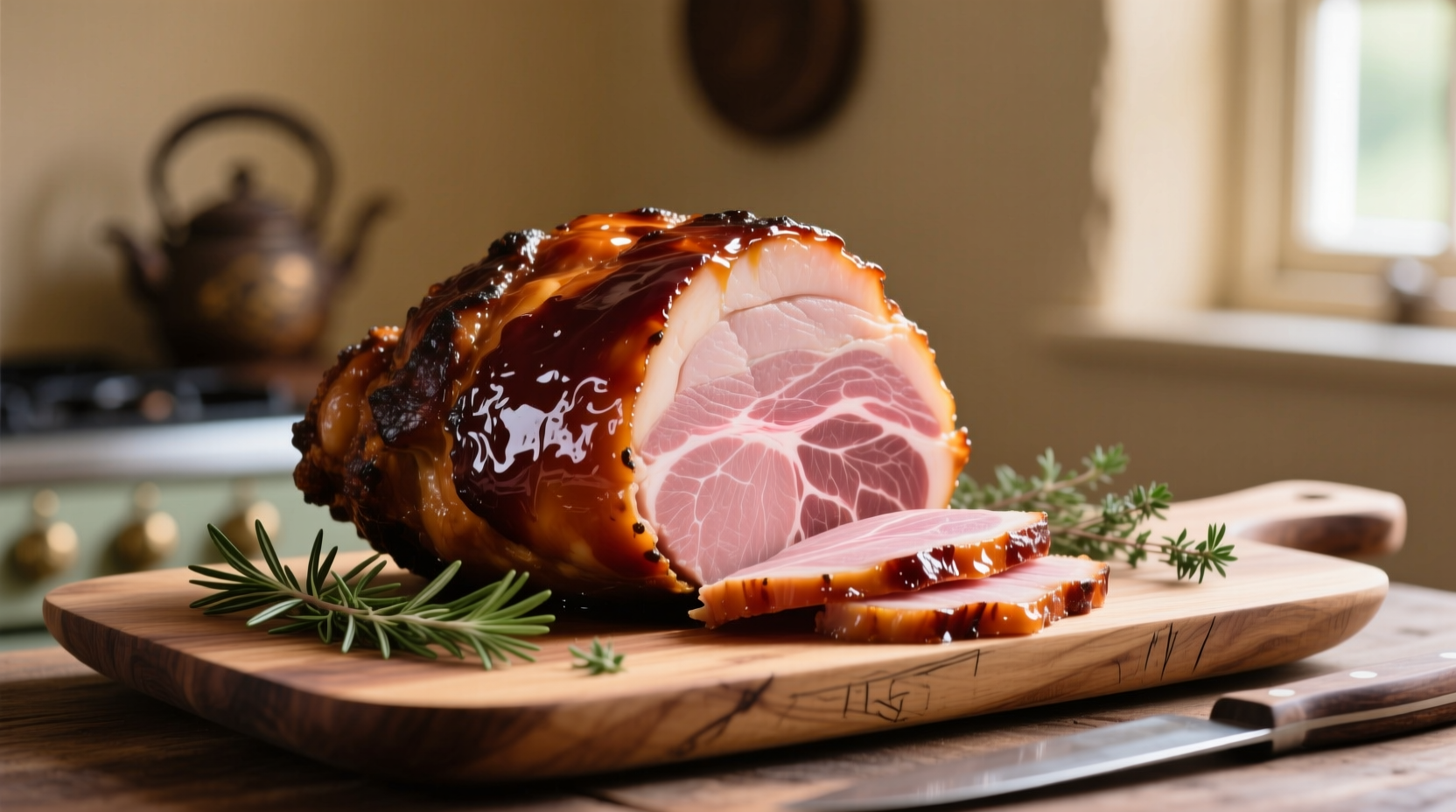Smithfield hams are fully cooked and only require reheating. For perfect results, bake at 325°F for 10-15 minutes per pound until internal temperature reaches 140°F. Spiral-cut hams should be placed cut-side down, covered with foil, and basted periodically to maintain moisture. Glaze during the final 20-30 minutes of cooking for optimal flavor and appearance.
Why Smithfield Ham Deserves Special Cooking Attention
Smithfield ham carries a Protected Geographical Indication (PGI) status, meaning authentic Smithfield hams come exclusively from Smithfield, Virginia, and follow specific curing traditions dating back to 1779. Unlike generic hams, Smithfield products undergo a minimum 6-month curing process with natural ingredients, creating a distinctive flavor profile that requires careful reheating to preserve quality.
| Ham Type | Weight Range | Recommended Cooking Time | Internal Temperature |
|---|---|---|---|
| Spiral-cut | 7-10 lbs | 10-12 min/lb | 140°F |
| Whole bone-in | 10-14 lbs | 12-15 min/lb | 140°F |
| Half ham | 5-7 lbs | 15-18 min/lb | 140°F |
Preparation Phase: Setting Up for Success
Before you start cooking your Smithfield ham, proper preparation prevents common mistakes that lead to dry, tough meat. Most Smithfield hams are fully cooked during processing, so your goal is reheating without overcooking.
Thawing Guidelines for Frozen Hams
If your ham is frozen, allow 4-5 hours per pound in the refrigerator. Never thaw at room temperature, as USDA Food Safety and Inspection Service warns this creates ideal conditions for bacterial growth in the "danger zone" between 40°F and 140°F (USDA FSIS).
Essential Equipment Checklist
- Oven-safe meat thermometer (digital recommended)
- Roasting pan with rack
- Aluminum foil
- Basting brush
- Sharp carving knife for post-cooking
Cooking Process: Step-by-Step Execution
The cooking phase requires attention to temperature control and timing. Smithfield's official recommendations emphasize gentle reheating to preserve the ham's delicate texture.
Preheating and Initial Setup
Preheat your oven to 325°F—never higher, as excessive heat dries out the meat. Place the ham cut-side down in the roasting pan. For spiral-cut varieties, this positioning protects the exposed meat from direct heat. Add 1 cup of liquid (apple juice, cola, or water) to the pan bottom to create steam and maintain moisture.

Temperature Management Timeline
Cover the ham tightly with foil to trap moisture. Bake according to weight guidelines, checking the internal temperature periodically. Insert the thermometer into the thickest part, avoiding bone. When the temperature reaches 130°F (about 30 minutes before completion), remove the foil and apply your glaze.
Glazing Techniques for Maximum Flavor
Effective glazing requires understanding the Maillard reaction—the chemical process that creates complex flavors when sugars and proteins interact under heat. Apply glaze during the final 20-30 minutes to prevent burning. Popular combinations include:
- Brown sugar, Dijon mustard, and pineapple juice
- Maple syrup with cloves and orange zest
- Honey, apple cider vinegar, and smoked paprika
Safety and Quality Verification
Food safety remains critical even with pre-cooked meats. The Centers for Disease Control and Prevention reports that improper handling of ready-to-eat meats contributes to approximately 9 million foodborne illnesses annually in the United States (CDC Food Safety).
Determining Perfect Doneness
Your ham is properly reheated when it reaches 140°F internally. Remove it from the oven at 135°F, as residual heat will continue cooking the meat during resting. Never rely solely on cooking time—always verify with a thermometer. Under 140°F risks foodborne illness; over 145°F guarantees dry, tough ham.
Serving and Storage Best Practices
Proper handling after cooking preserves quality and ensures food safety. Allow the ham to rest for 15-20 minutes before carving. This resting period lets juices redistribute throughout the meat, preventing dryness when sliced.
Carving Spiral-Cut Hams
With pre-sliced spiral hams, simply follow the existing cuts. For whole hams, slice perpendicular to the bone in 1/4-inch thick slices. Serve immediately while warm for optimal texture and flavor release.
Leftover Management Guidelines
Refrigerate leftovers within 2 hours of cooking. Store in airtight containers for up to 3-4 days. For longer storage, freeze portions for up to 2 months. When reheating, use low oven temperatures (275°F) with added moisture to prevent further drying.
Troubleshooting Common Cooking Issues
Even experienced cooks encounter challenges with ham preparation. Understanding these solutions prevents meal disasters:
Dry Ham Recovery Techniques
If your ham emerges drier than desired, create a rescue sauce by simmering 1 cup broth with 2 tablespoons cornstarch until thickened. Pour gently over slices at serving time. The added moisture compensates for lost juices during cooking.
Glaze Burning Prevention
Monitor glaze application closely during the final cooking phase. If burning occurs, immediately cover with foil and reduce oven temperature by 25°F. Consider applying glaze in multiple thin layers rather than one thick application.
Advanced Tips for Culinary Excellence
Elevate your Smithfield ham preparation with these professional techniques:
- Create steam pockets by scoring the fat cap in a diamond pattern before cooking
- Insert whole cloves at intersection points of scored fat for aromatic infusion
- Use pineapple rings weighted with maraschino cherries during final glazing phase
- Rest the ham on a wire rack above liquid in the pan to prevent soggy bottom











 浙公网安备
33010002000092号
浙公网安备
33010002000092号 浙B2-20120091-4
浙B2-20120091-4